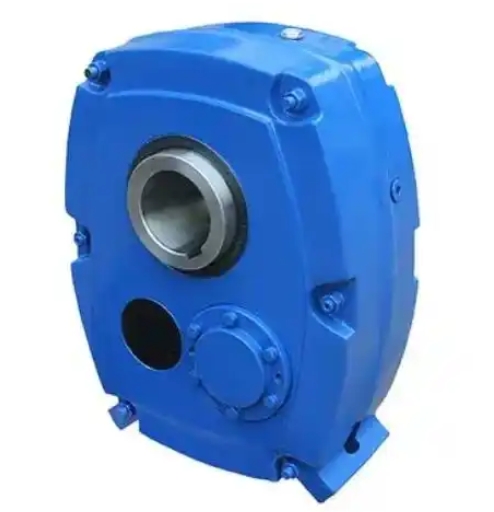What are the differences between a shaft-mounted helical gear reducer and a standard reducer?
There are many differences between shaft mounted helical gear reducers and ordinary reducers, as follows:
Structure Design
Shaft mounted helical gear reducer: It adopts a shaft mounted structure and can be directly installed on the drive shaft of the equipment. It is usually composed of a high-strength cast iron box, high-precision helical gear, high-strength alloy steel input gear shaft, etc. It is also equipped with accessories such as torque arm for installation and adjustment of space position and belt tension.
Ordinary gearbox: There are various structural forms, including parallel shaft type, planetary type, worm gear type, etc. For example, parallel axis reducers use multi-stage parallel axis gear transmission; The planetary gearbox has a planetary gear system structure; Worm gear reducer includes worm gear and worm drive. There are also various installation methods, such as base installation, flange installation, etc.

Gear characteristics
Shaft mounted helical gear reducer: using helical gears, the tooth groove is designed diagonally, and the gear contact method is oblique contact. This design results in a higher degree of overlap and an increase in the number of teeth involved in meshing.
Ordinary reducer: Some ordinary reducers, such as spur gear reducers, use spur gears with teeth perpendicular to the axis direction, and the gear contact method is linear contact. Planetary reducers may contain various gear combinations such as helical gears and spur gears, while worm gear reducers use worm gears as transmission components.
transmission performance
Shaft mounted helical gear reducer: with high transmission efficiency, the transmission efficiency of each gear stage can reach about 98%. Due to the characteristics of helical gears, the transmission is smooth, with relatively low noise and vibration, and can withstand large loads, with strong torque transmission capability.
Ordinary gearbox: The transmission performance of different types of ordinary gearboxes varies greatly. The transmission efficiency of spur gear reducers is relatively high, but when transmitting the same power, their noise and vibration are usually greater than those of helical gear reducers, and their torque transmission ability is relatively weak. The worm gear reducer has a large transmission ratio, but the transmission efficiency is relatively low, generally around 70% -80%, but it has a reverse self-locking function. The planetary gearbox has a compact structure, high transmission efficiency, small return clearance, and high precision, but the manufacturing cost is relatively high.
Installation and maintenance
Shaft mounted helical gear reducer: It is easy to install and can be directly fitted onto the drive shaft without the need for specialized foundations or foundations, reducing the use of elastic couplings and saving installation space and costs. But there are certain requirements for installation accuracy, which need to ensure the accuracy of shaft spacing and shaft interlocking position, as well as the correct gear backlash and fastening force.
Ordinary gearbox: The installation complexity of ordinary gearboxes varies depending on the installation method. The reducer installed on the base needs to have a suitable installation foundation, while the flange installation needs to ensure the accuracy of the flange connection. In terms of maintenance, due to differences in structure and gear types, the maintenance points and cycles for ordinary reducers also vary. For example, special attention should be paid to the wear of the worm gear in worm gear reducers, and to the lubrication of the planetary gear system and gear wear in planetary reducers.

